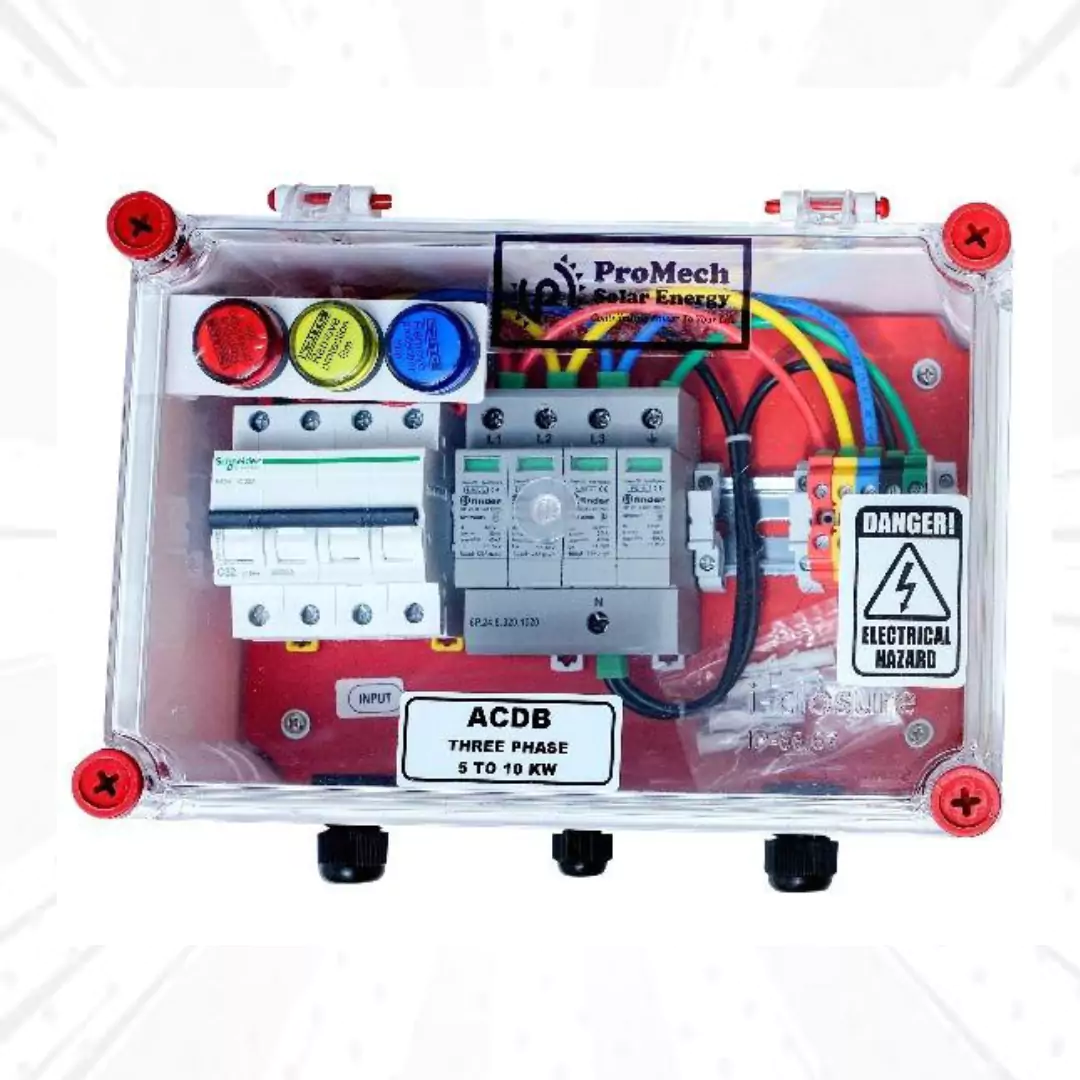
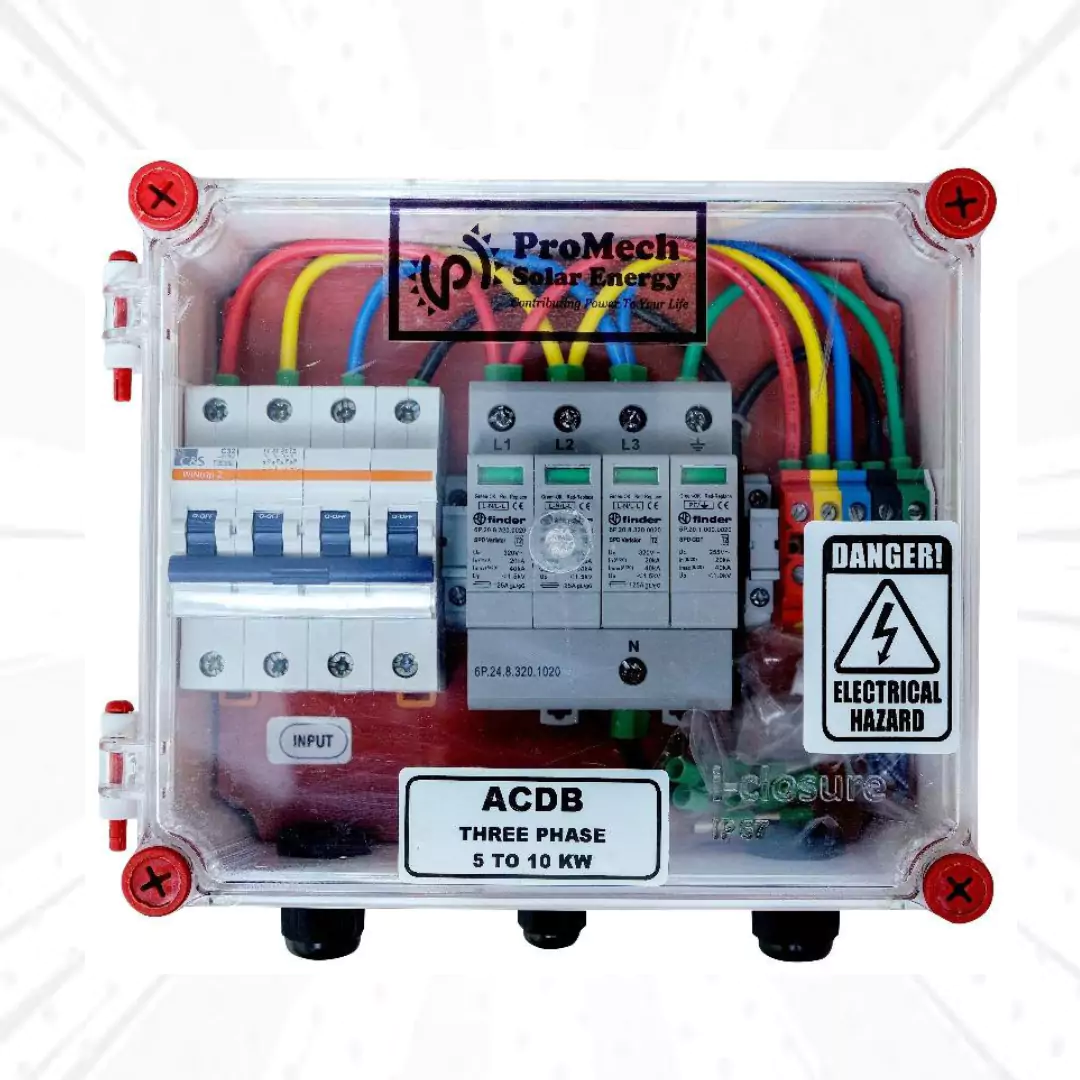
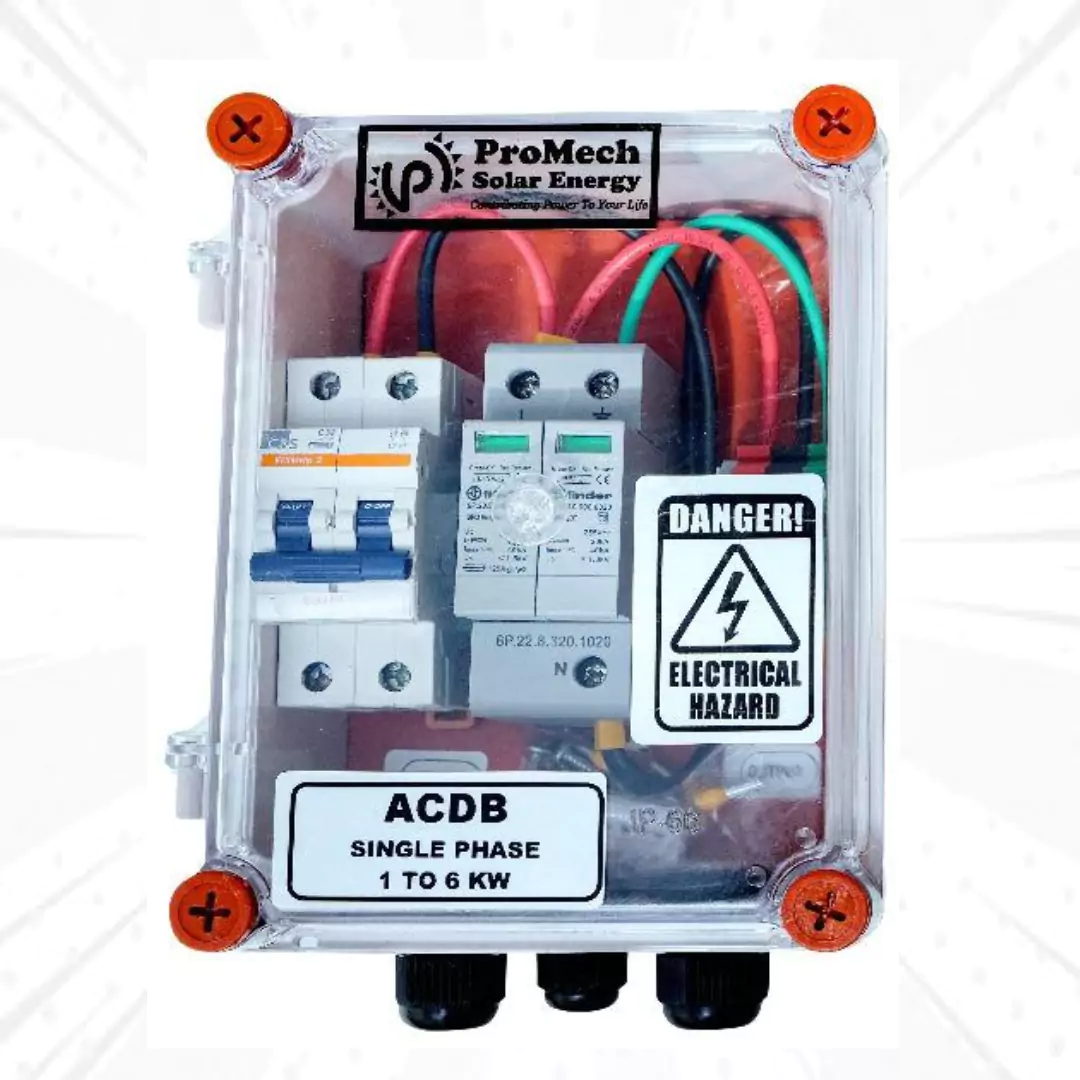
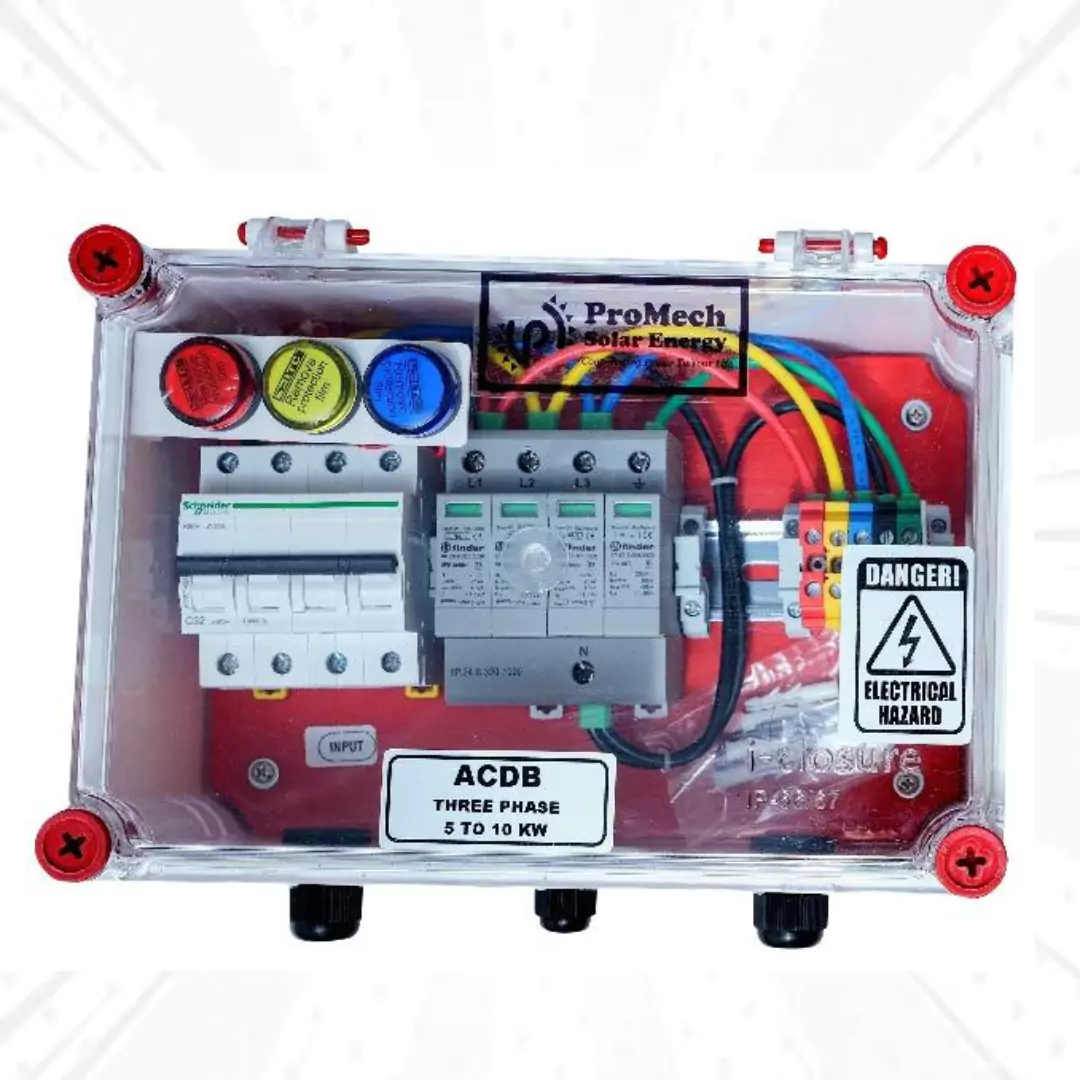
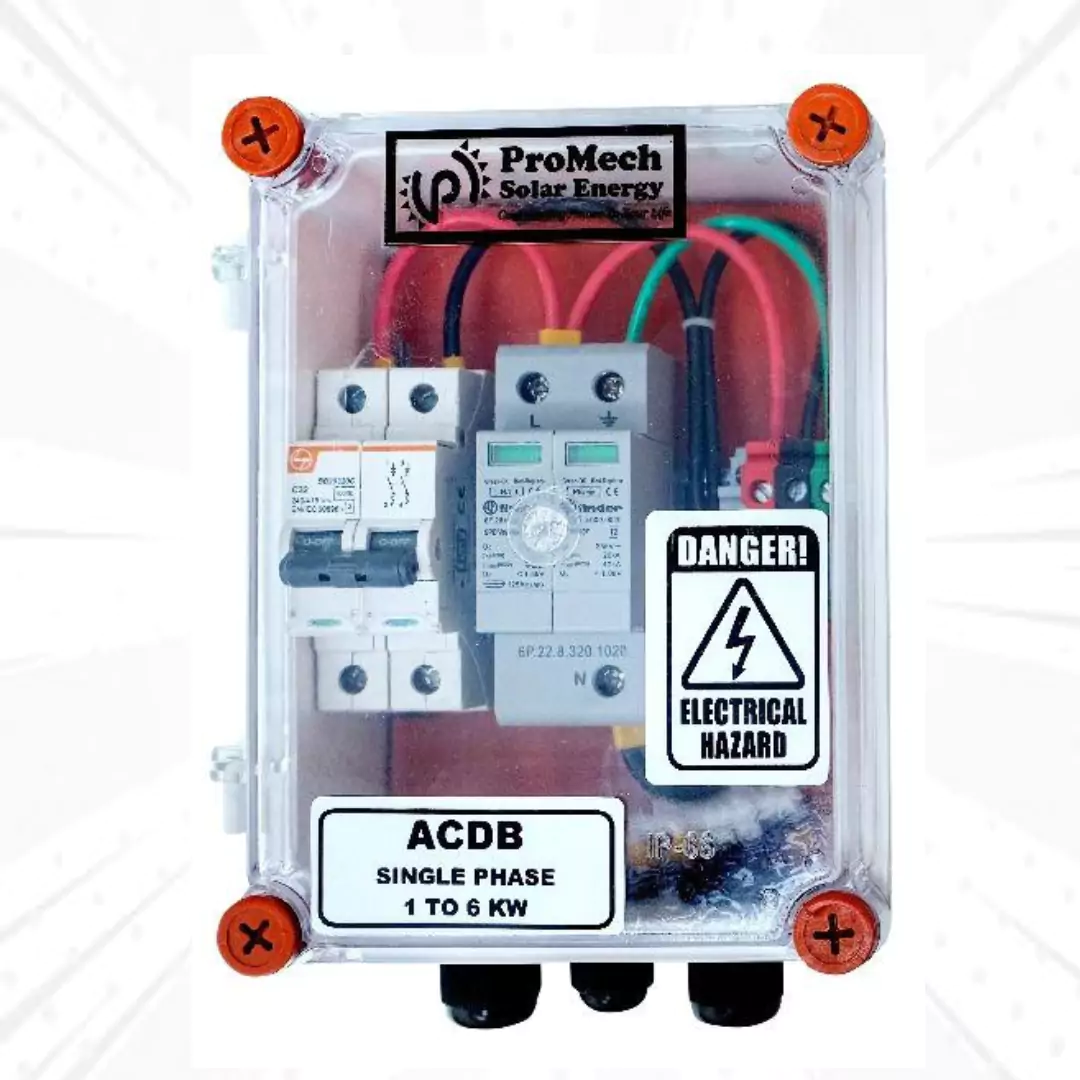
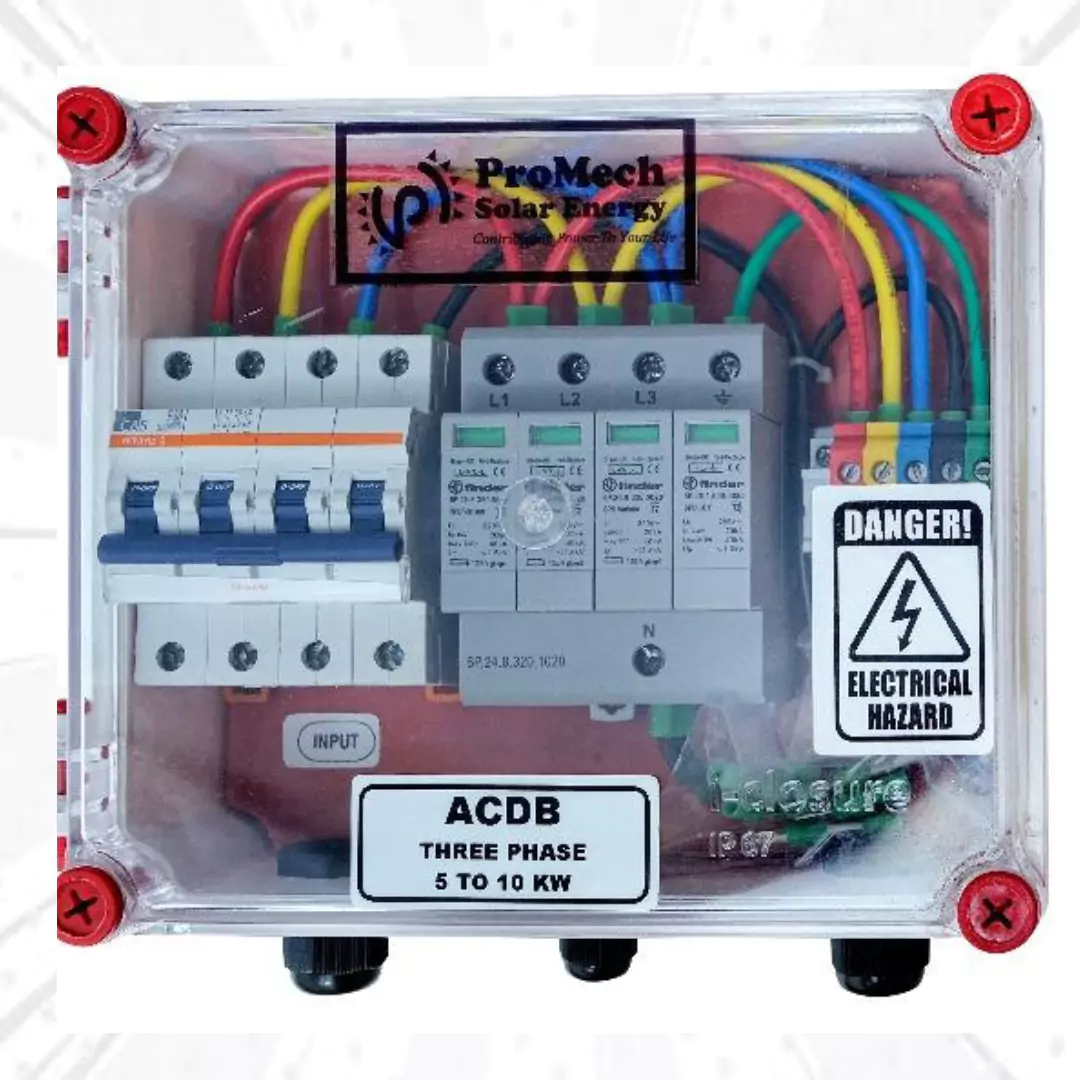
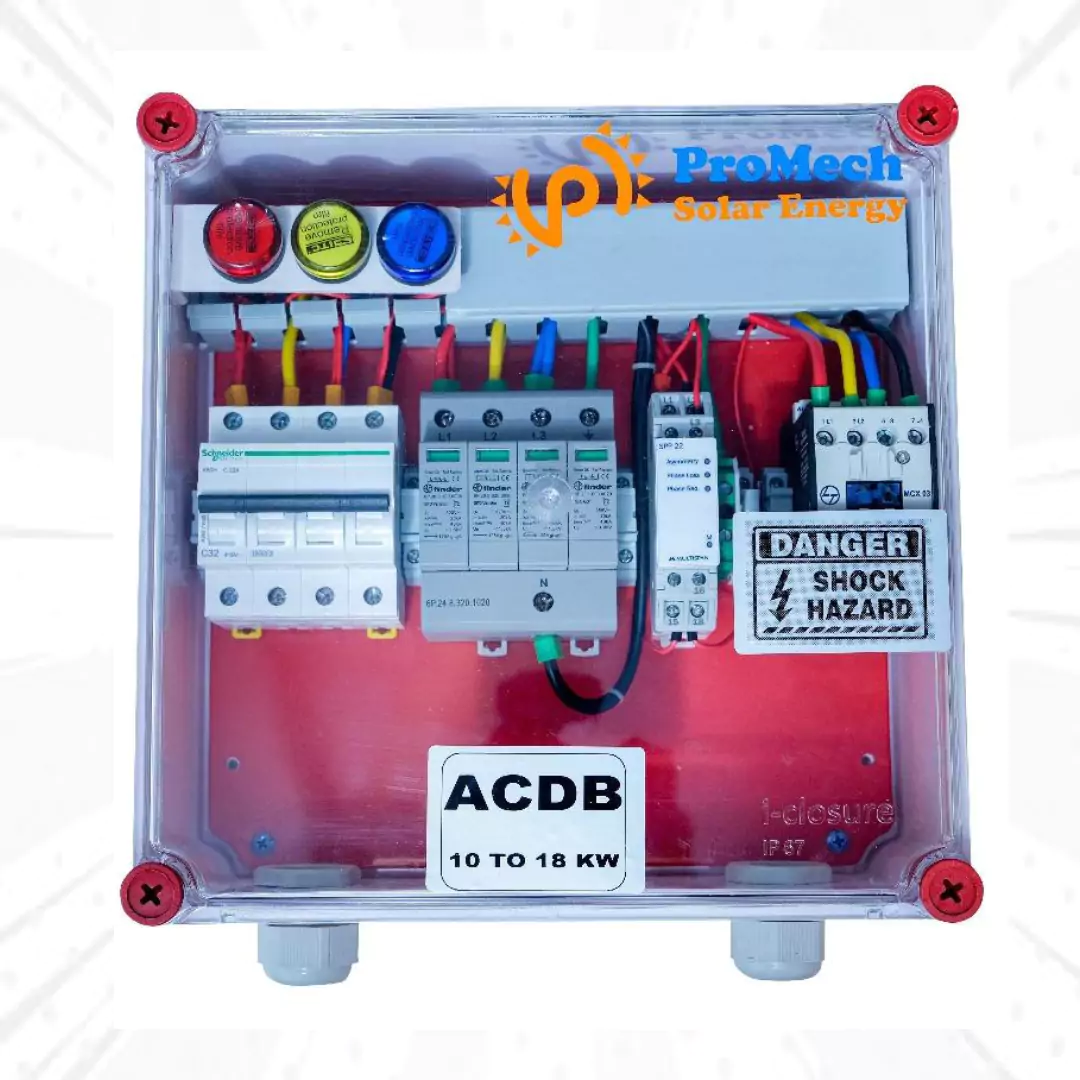
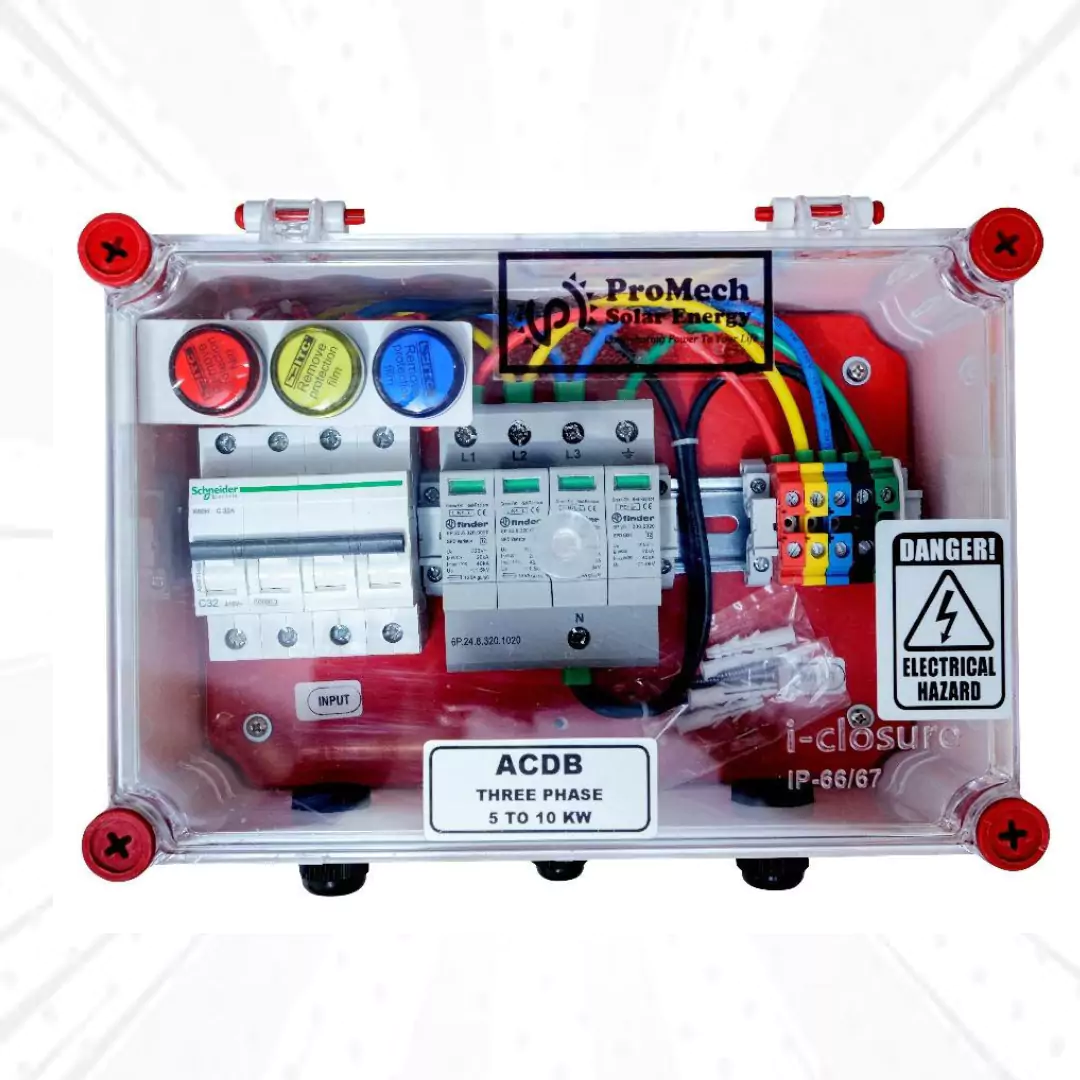
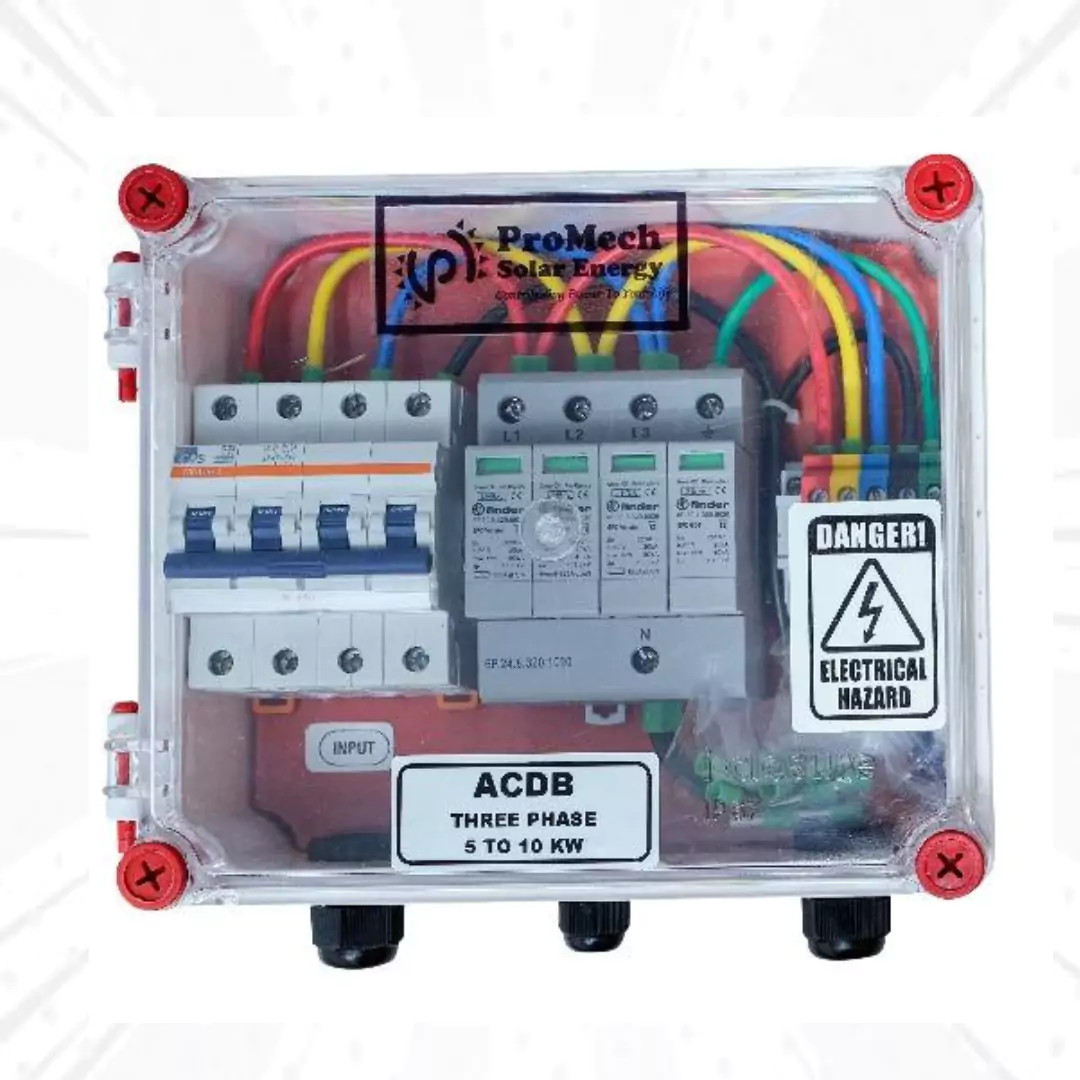
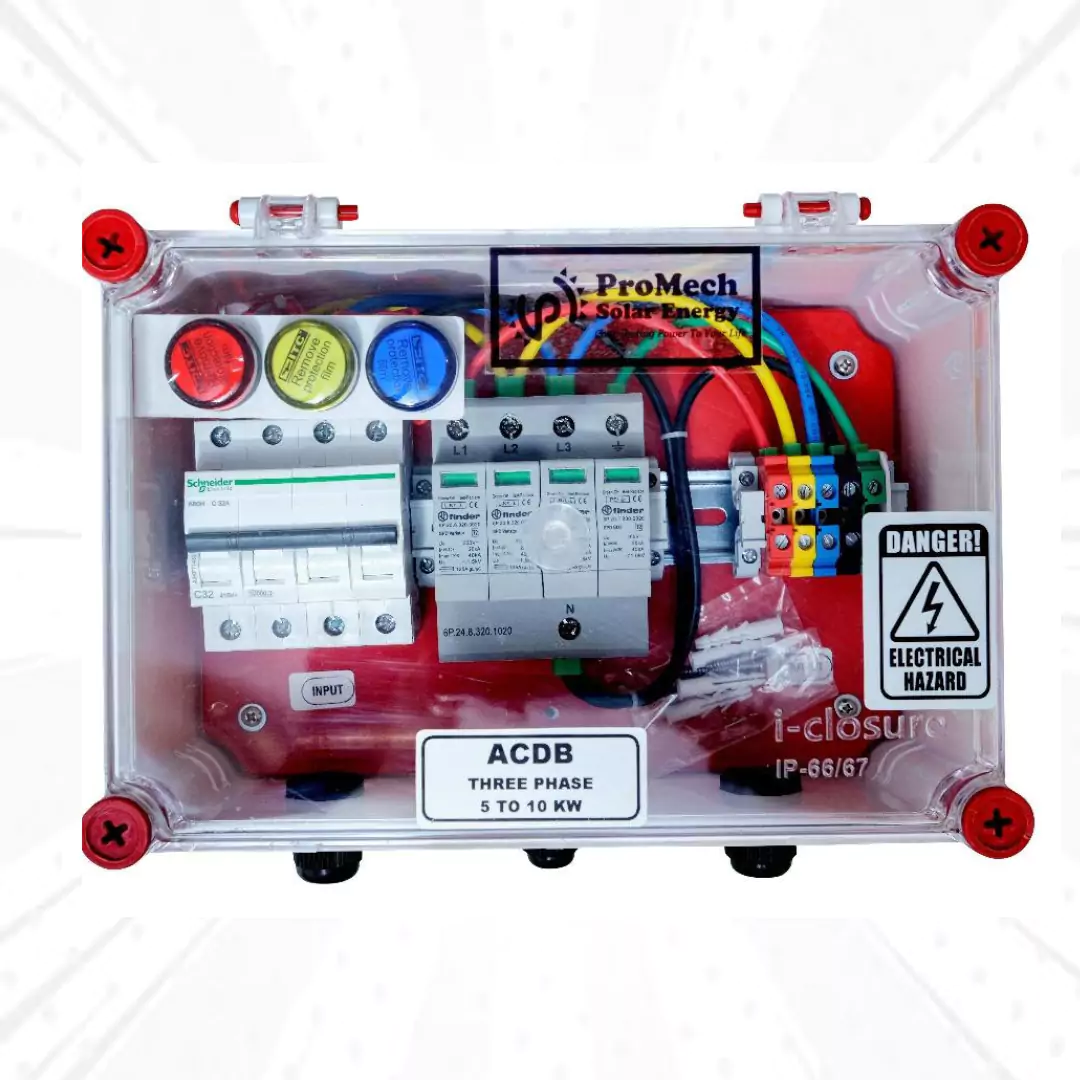
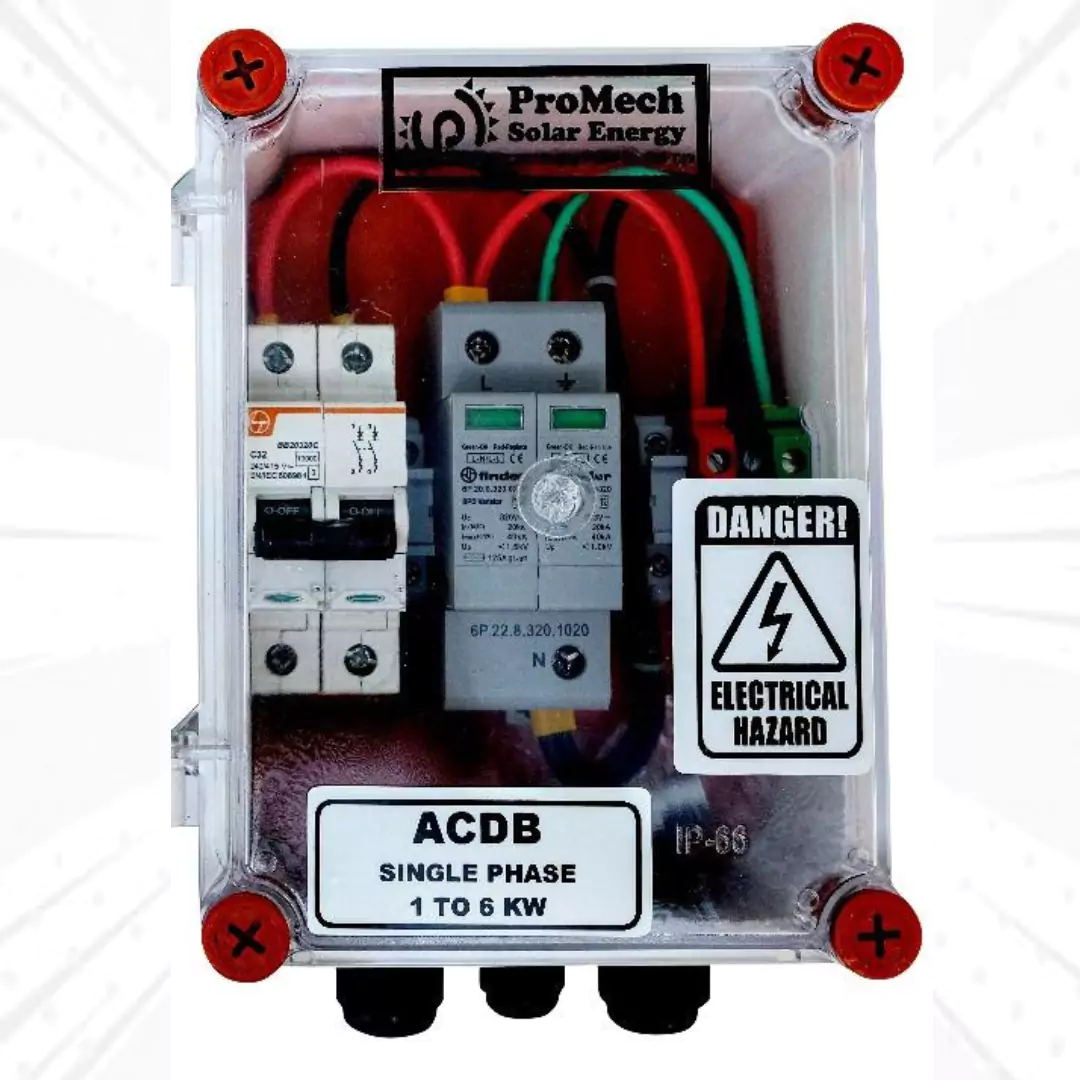
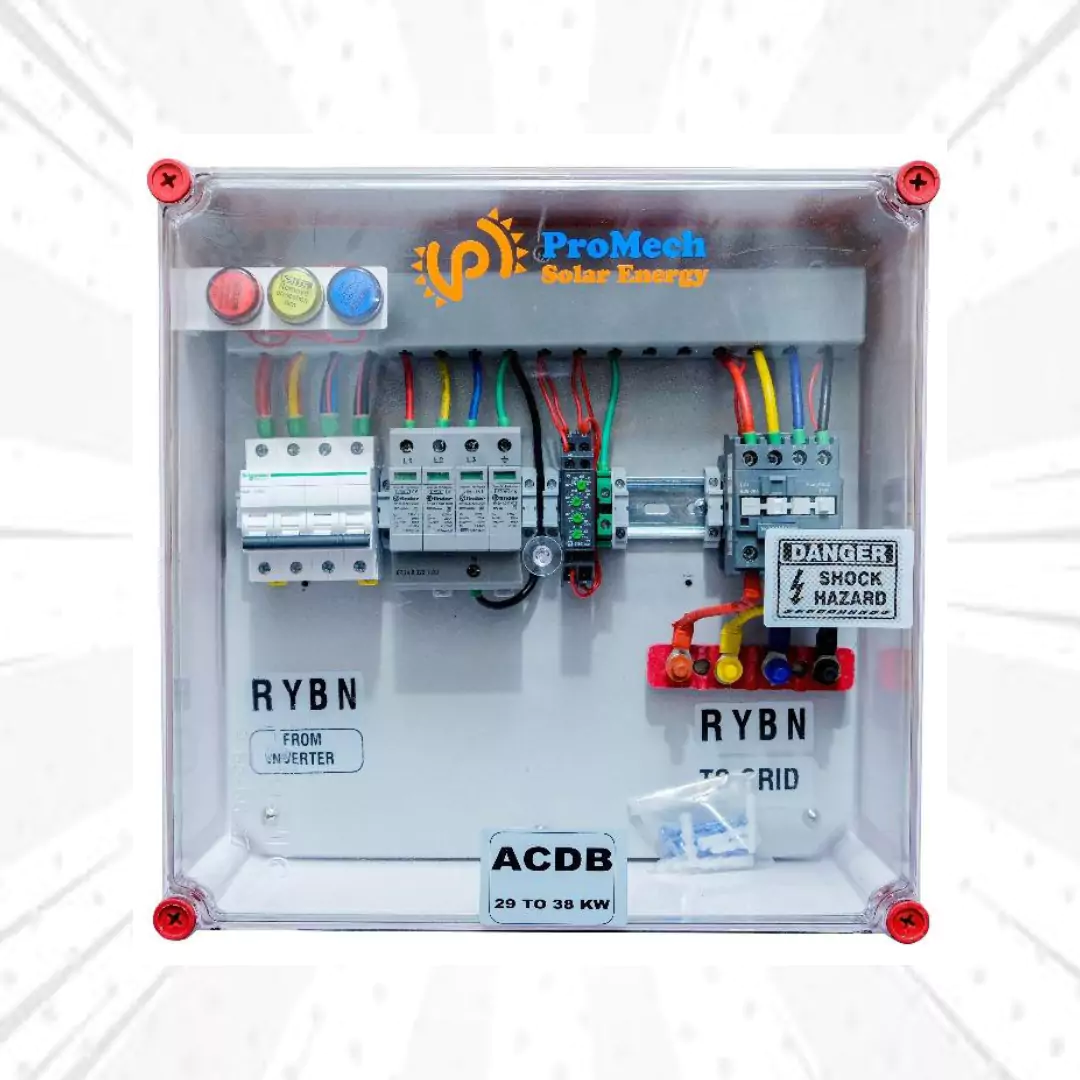
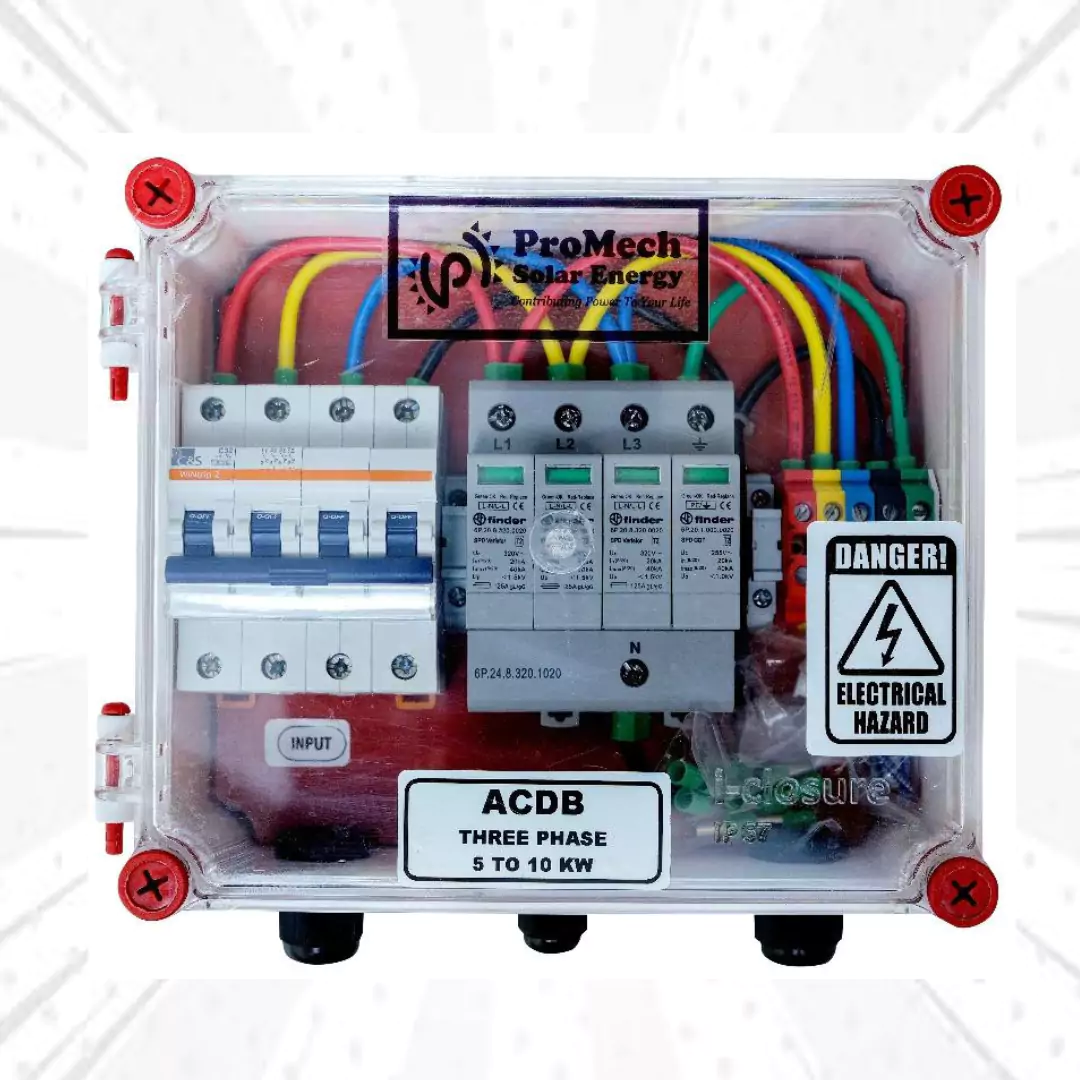
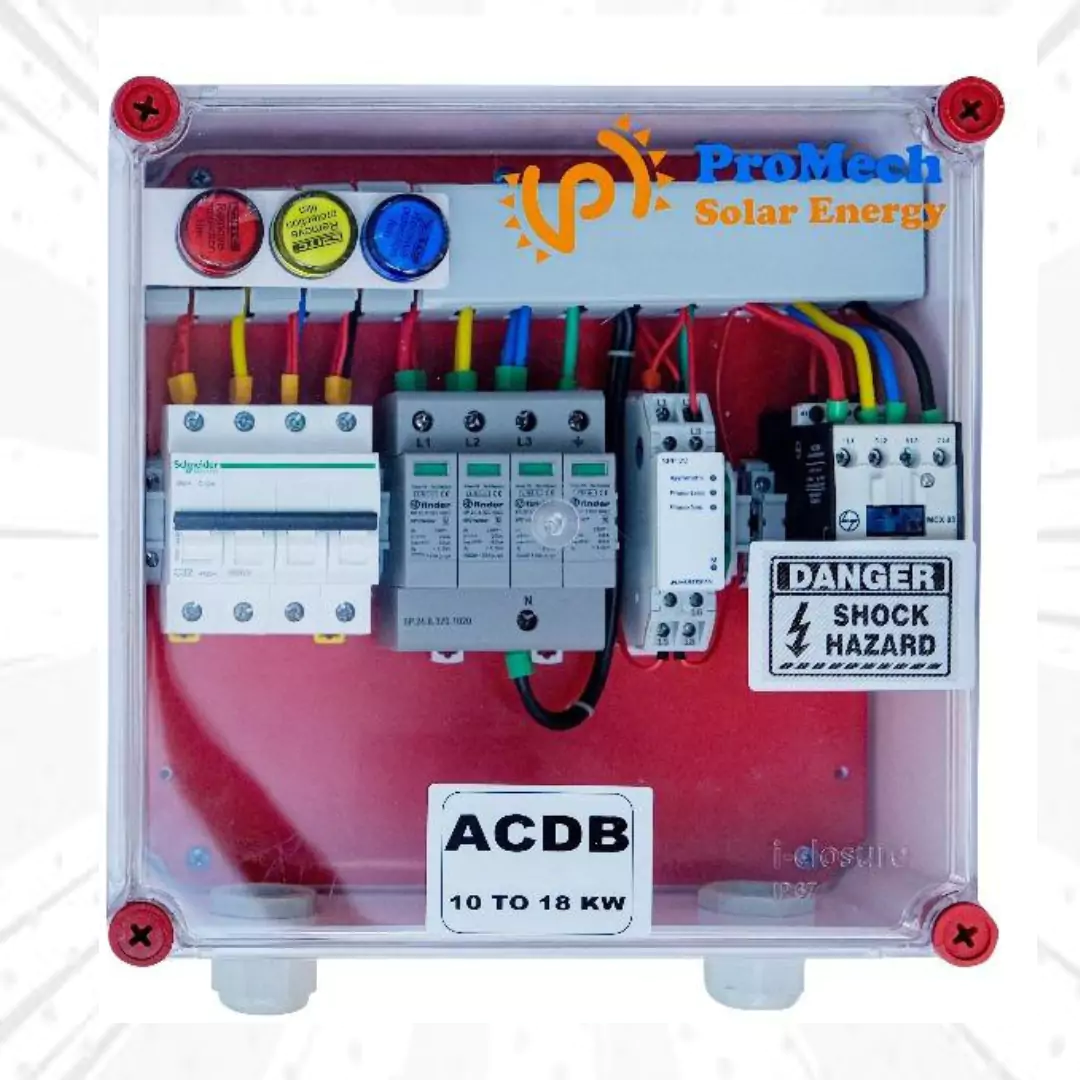
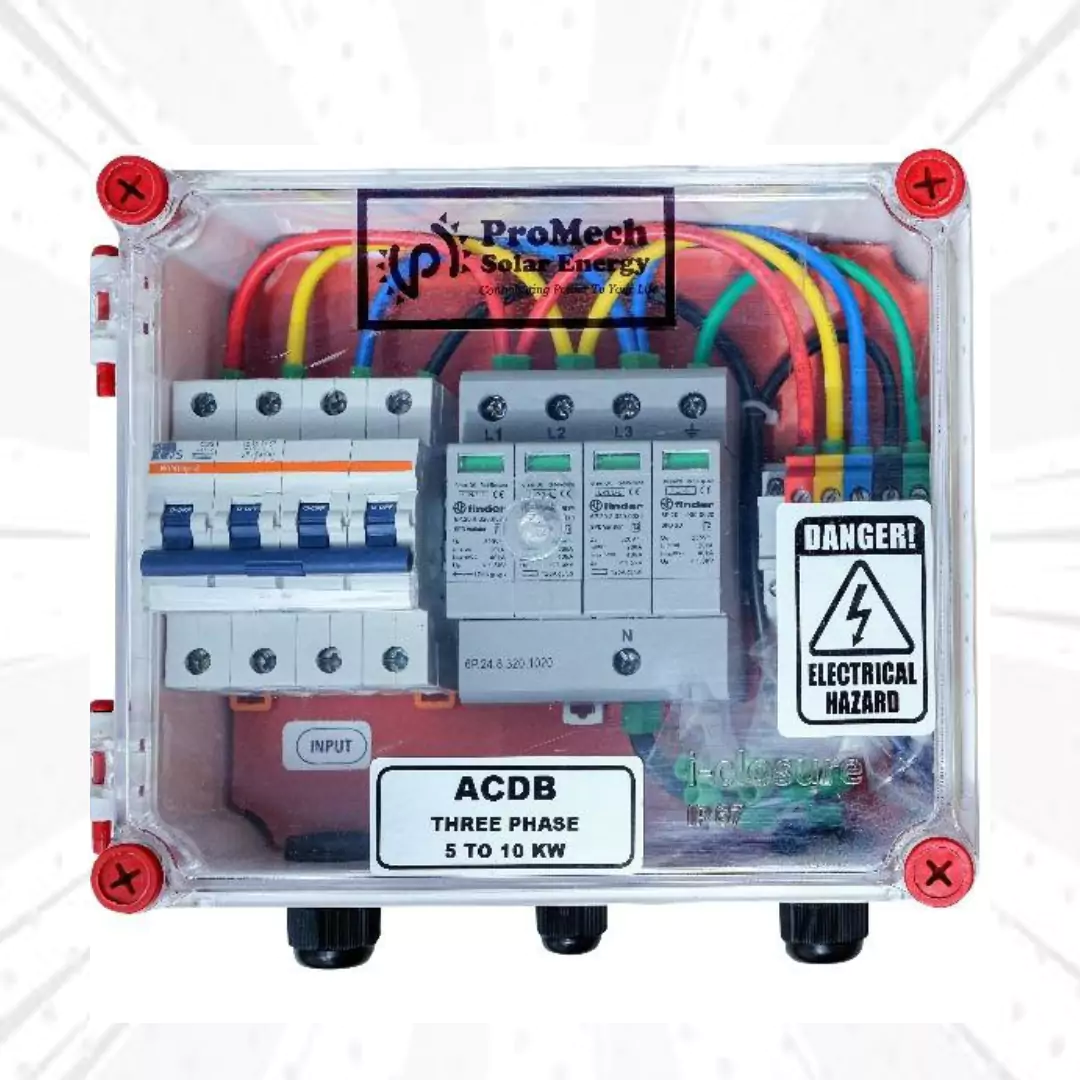
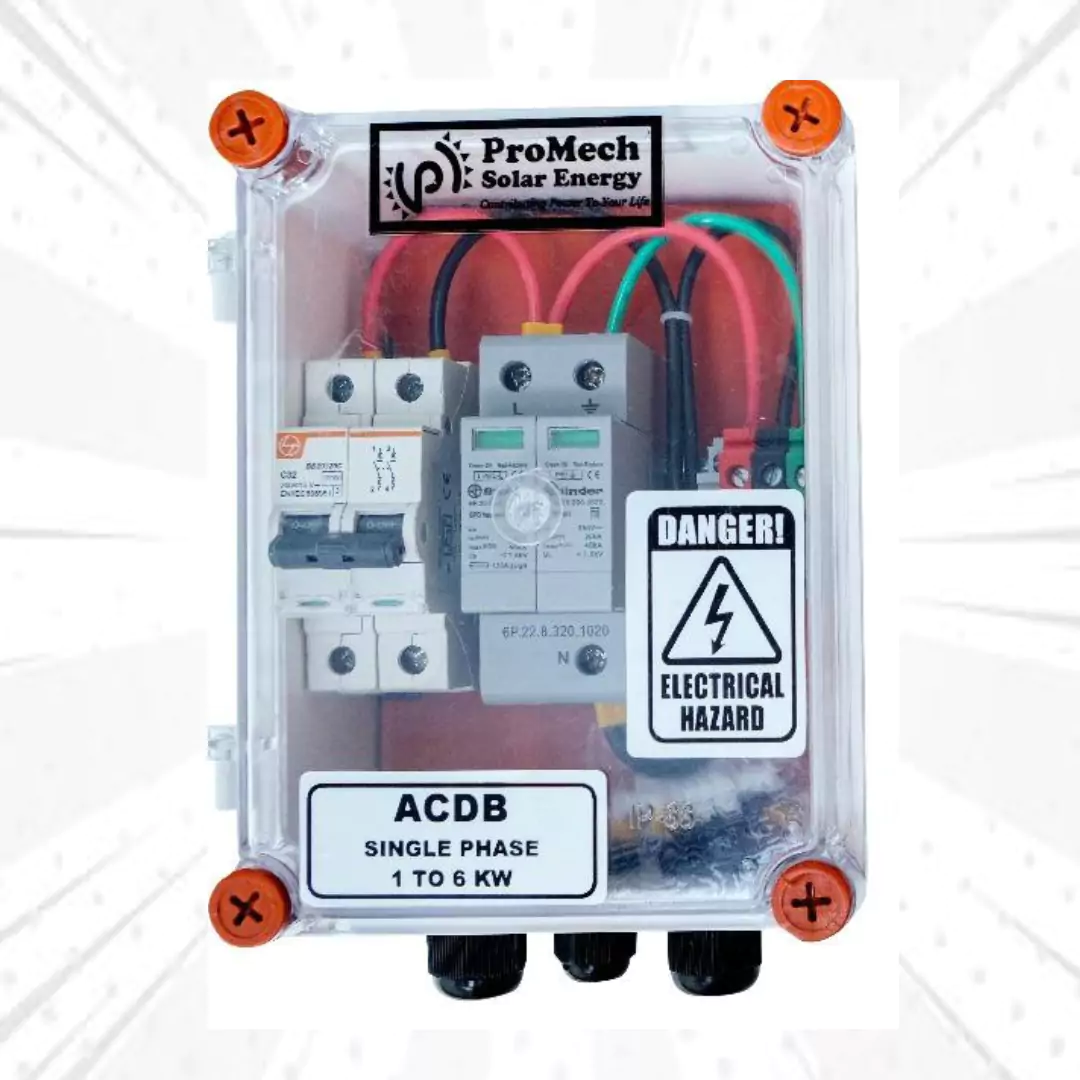
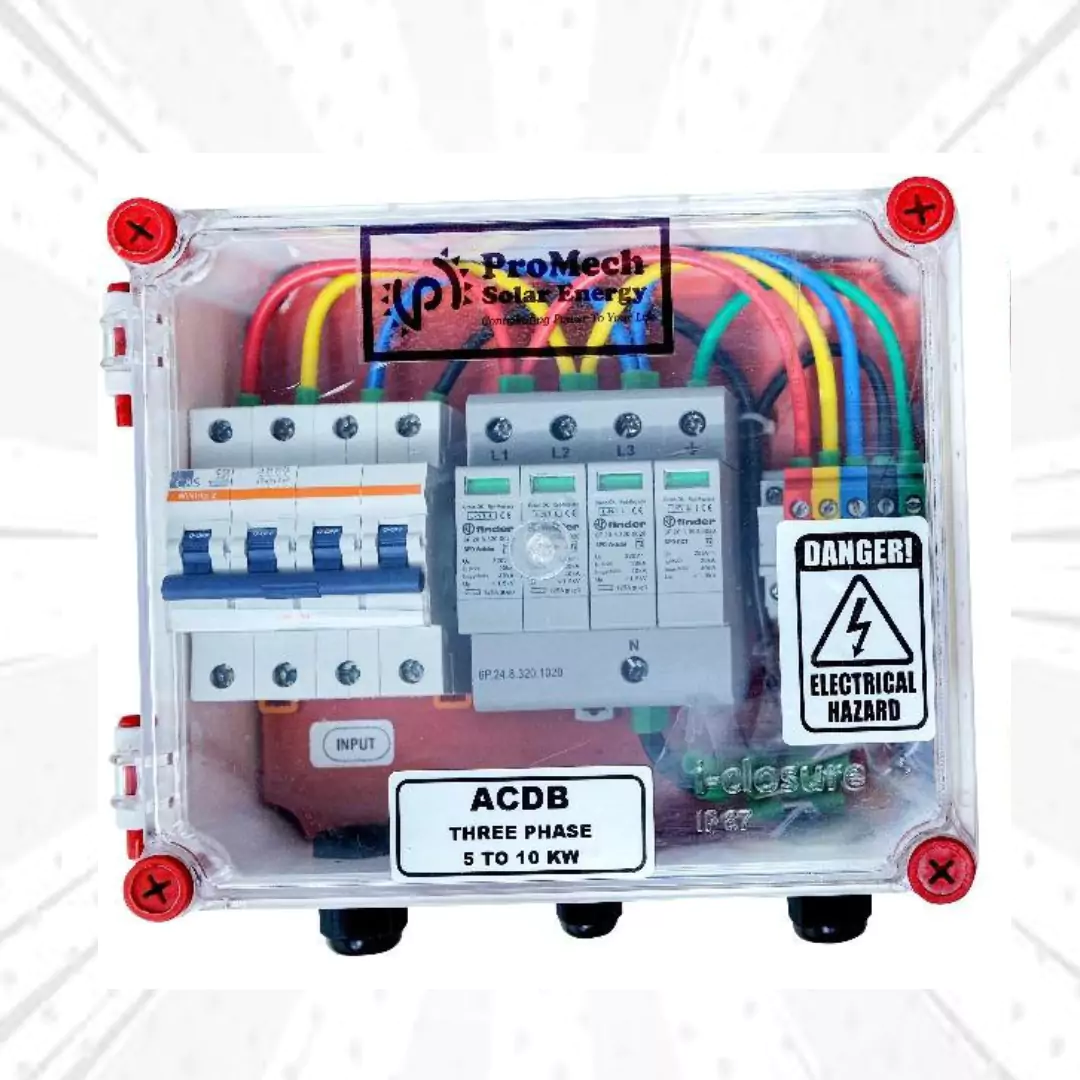
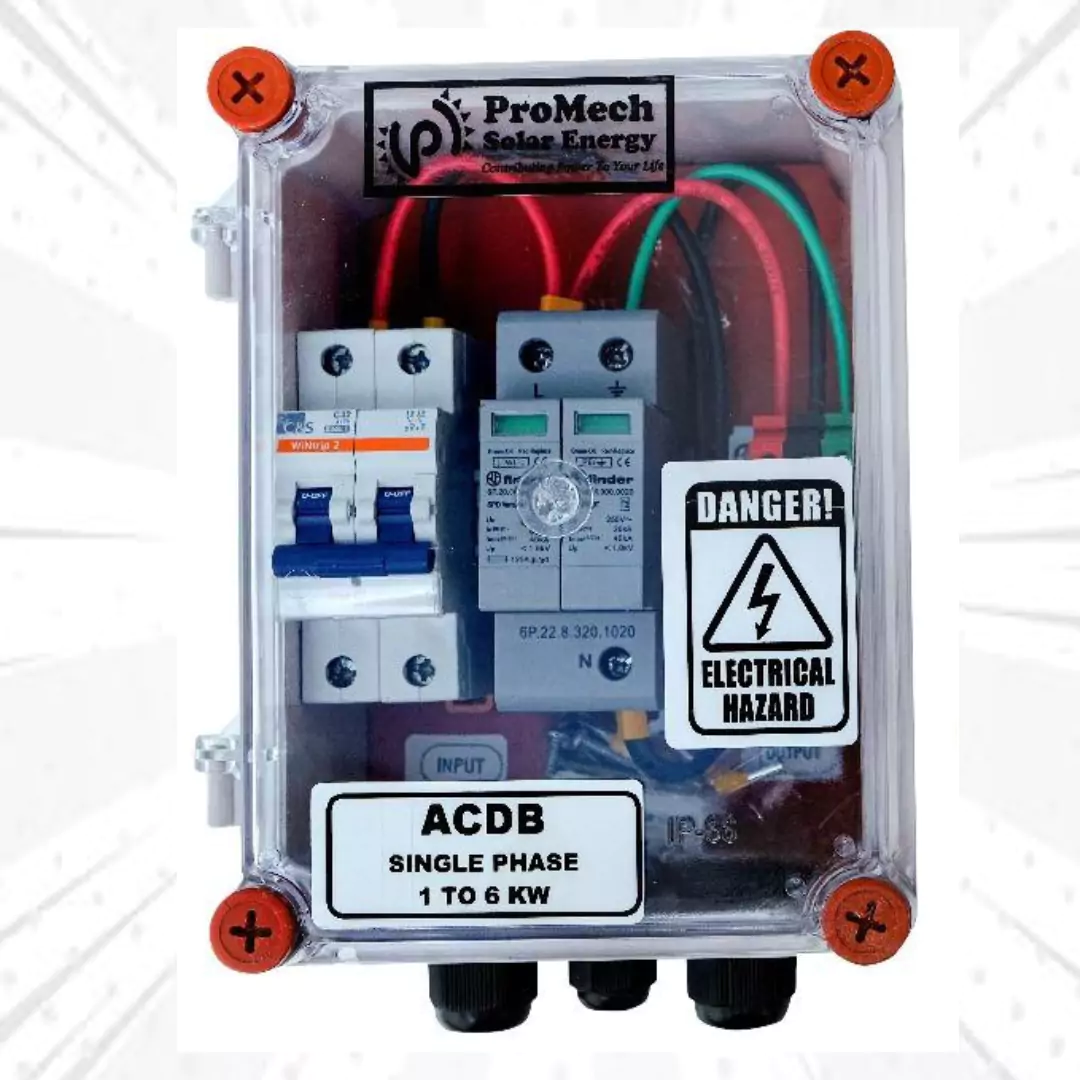
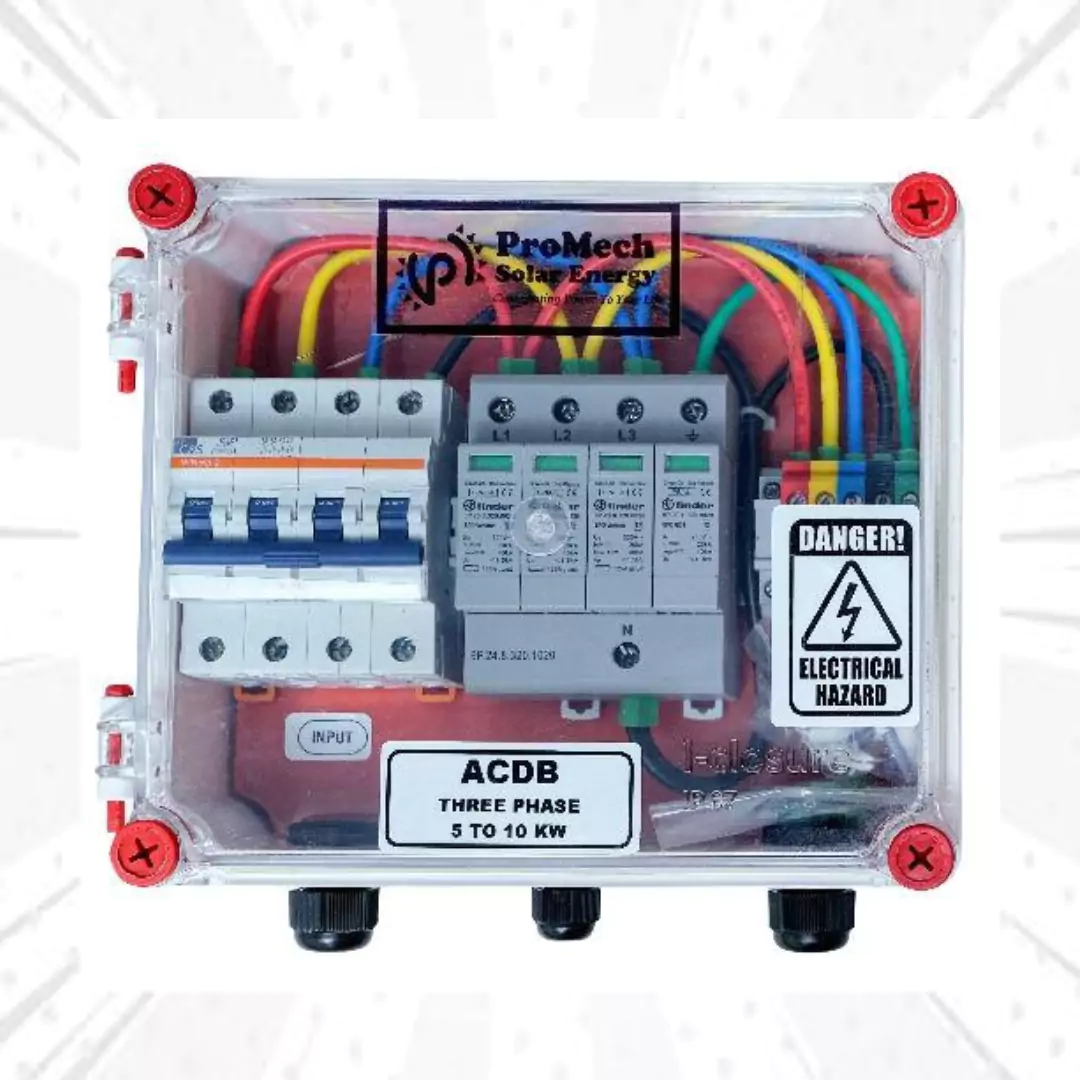

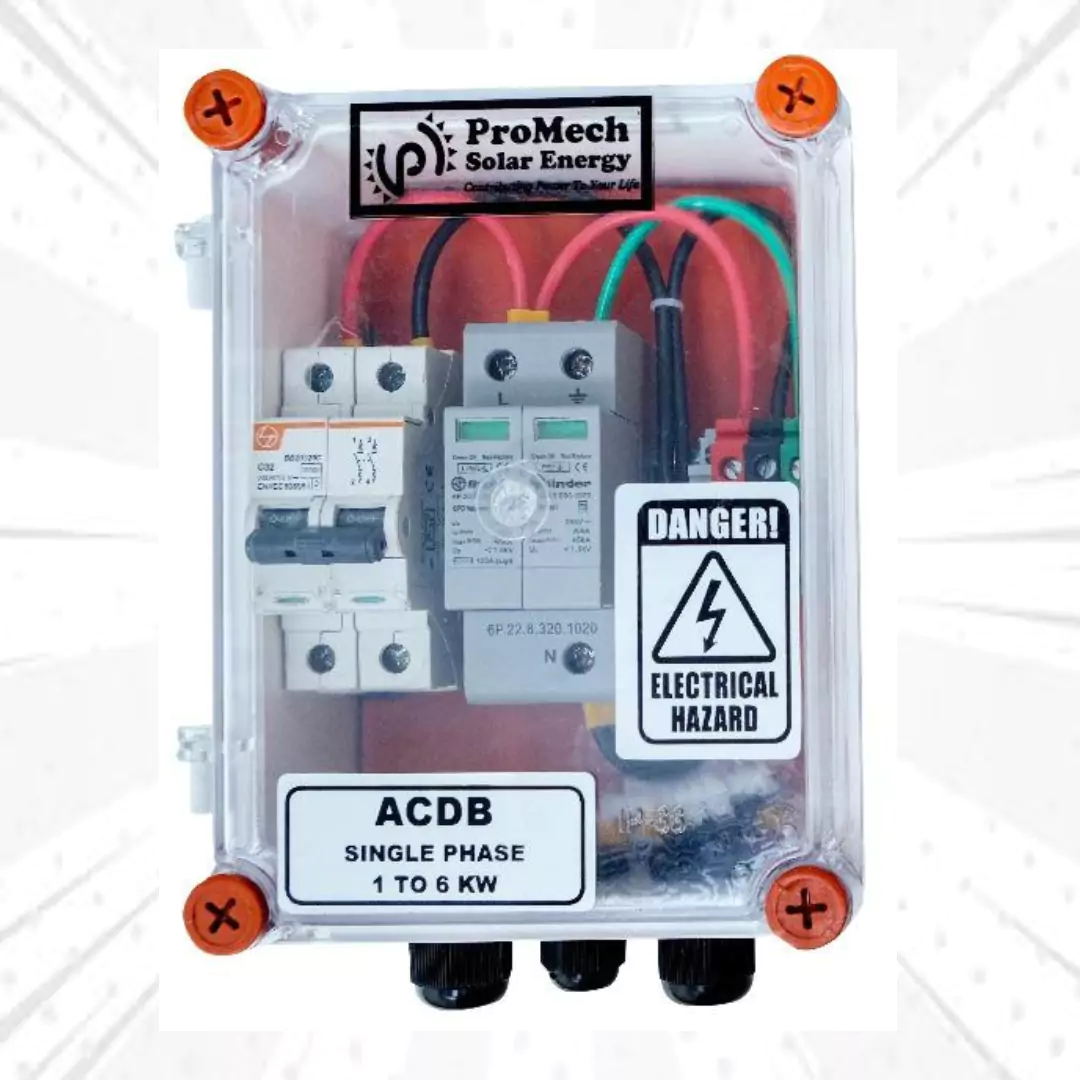
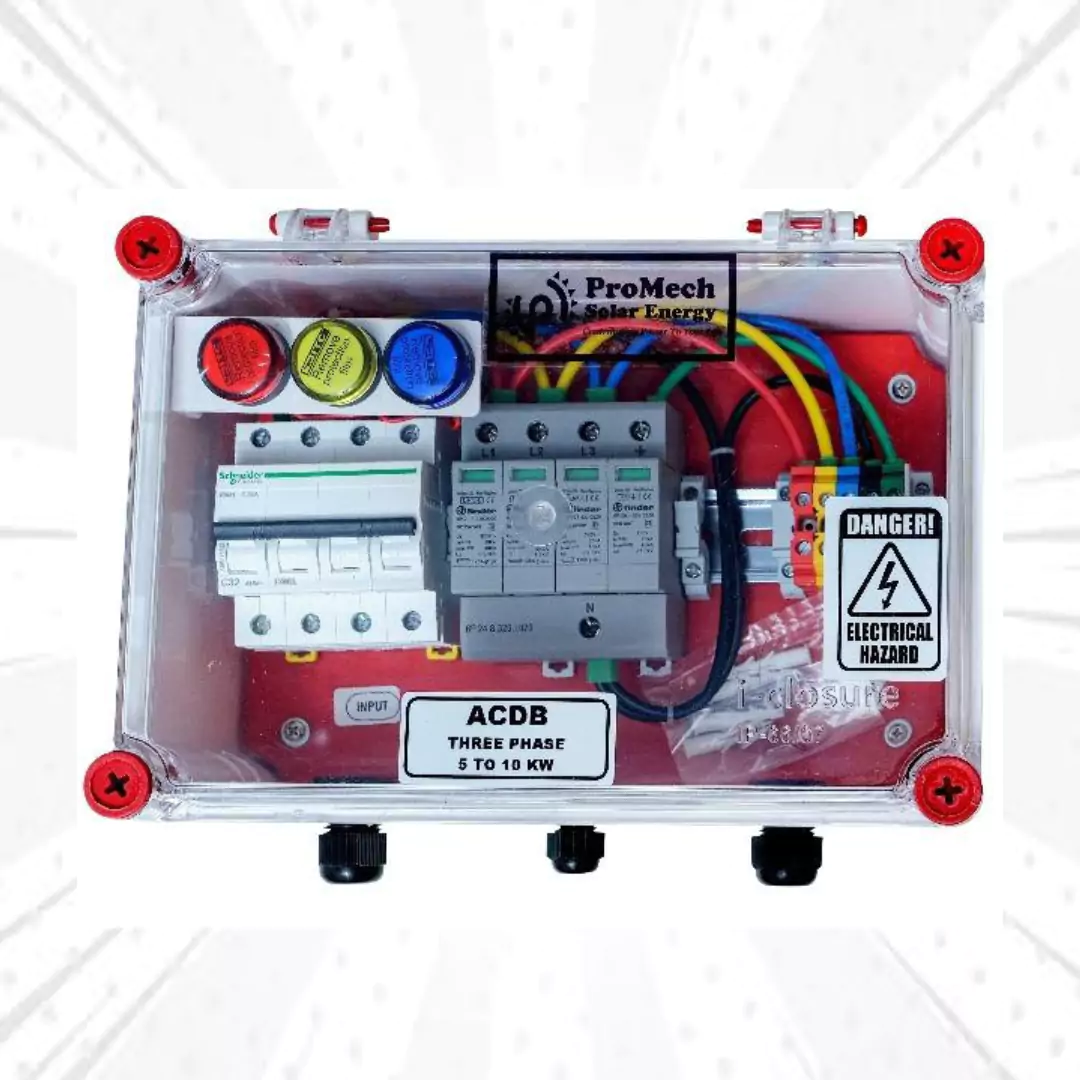
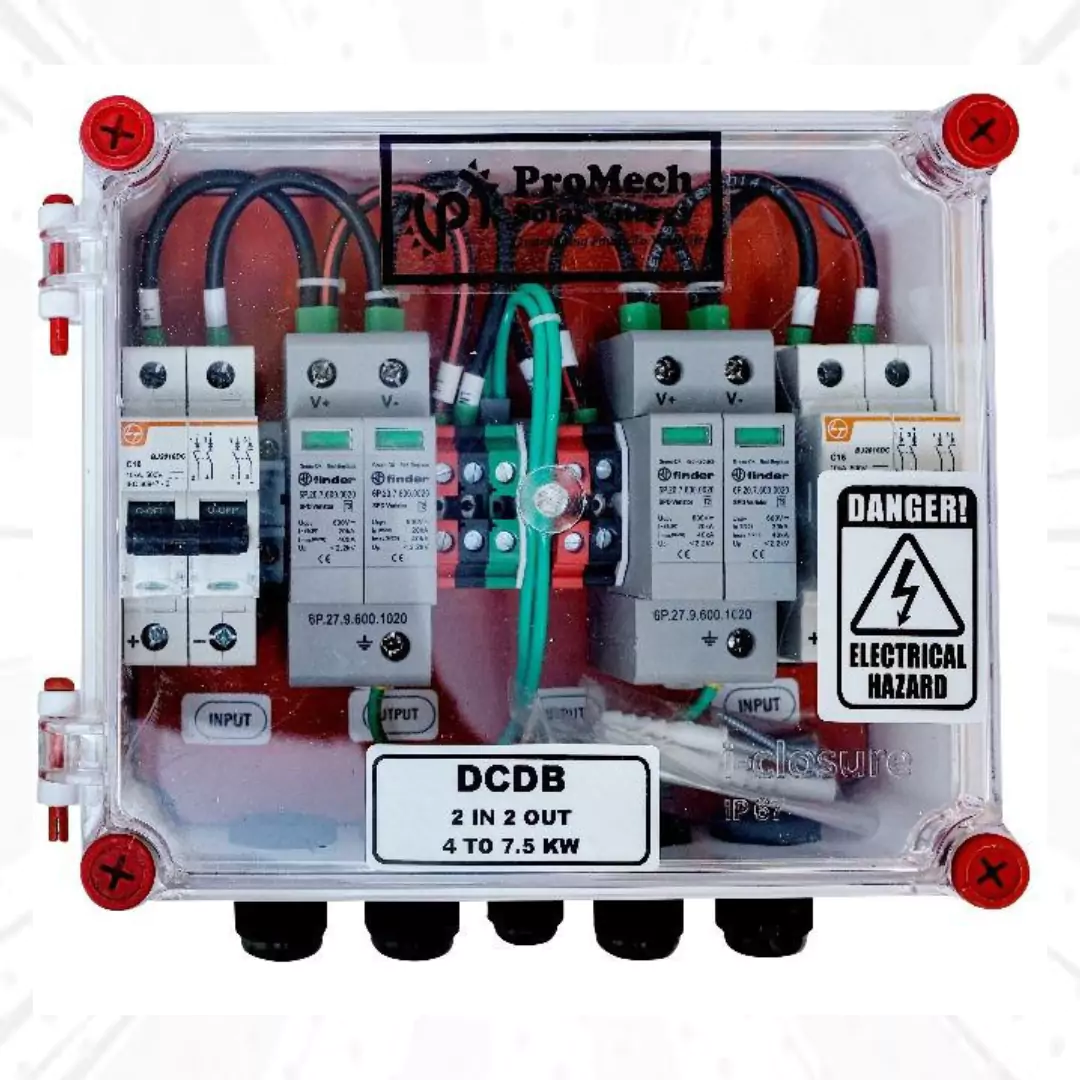
ACDB
As solar energy becomes increasingly popular across residential, commercial, and industrial sectors, it’s essential to understand the vital components that ensure the system’s safe and efficient operation. One such crucial component is the ACDB, or Alternating Current Distribution Box.
What is an ACDB?
An ACDB (Alternating Current Distribution Box) is an electrical distribution panel that receives AC power from the solar inverter and distributes it to various loads like household appliances or electrical equipment in commercial and industrial setups. It is designed to manage and control AC power output from the inverter safely and efficiently.
The ACDB includes essential protective devices like:
- MCB (Miniature Circuit Breakers)
- MCCB (Molded Case Circuit Breaker)
- SPD (Surge Protection Device)
- Energy meters
- Isolators and terminal blocks
It serves as a centralized point for monitoring, control, and protection of the AC side of the solar power system.
While solar panels and inverters receive most of the attention, components like ACDB are equally critical to the reliability and safety of the entire system. Here’s why ACDBs are indispensable:
1. Protection from Electrical Faults
ACDBs safeguard your electrical appliances and wiring from overvoltage, overload, short circuits, and surges caused by grid fluctuations or inverter faults.
2. Controlled Power Distribution
They allow controlled and organized distribution of AC power to different circuits or loads, preventing imbalances and power drops.
3. Monitoring and Troubleshooting
Advanced ACDBs are equipped with meters and indicators that provide real-time monitoring, making it easier to detect faults or issues in the system.
An ACDB typically contains the following major components:
• MCB (Miniature Circuit Breaker):
Protects against overload and short circuits by automatically disconnecting the circuit when excessive current flows.
• MCCB (Molded Case Circuit Breaker):
Used for higher current ratings, offering protection against overcurrent, short circuits, and equipment failures.
• Surge Protection Device (SPD):
Prevents equipment damage by protecting against voltage spikes and surges, especially due to lightning.
• Energy Meter:
Measures the amount of electricity delivered by the inverter to the load.
• Contactor and Relays:
Used for remote switching and automation features in larger systems.
• Isolators & Terminal Blocks:
Enable safe disconnection of circuits for maintenance and wiring.
Depending on the scale and application, ACDBs can vary in design and features:
1. Single-Phase ACDB:
Used in small residential systems with single-phase inverters and loads.
2. Three-Phase ACDB:
Suited for commercial and industrial systems using three-phase inverters.
3. Customized ACDBs:
Tailored based on the specific requirements of the installation, such as number of loads, ratings, and metering.
An Alternating Current Distribution Box (ACDB) is a small but powerful device that plays a critical role in the performance, safety, and reliability of solar power systems. Whether you’re setting up a rooftop solar system at home or designing a large commercial plant, choosing the right ACDB is key.
At Promech Solar Energy, we provide durable, high-quality ACDBs that meet international standards and support long-term solar performance. Let us help you power your future safely and efficiently.
More About ACDB
Applications of ACDB in Solar Systems
ACDBs are used across a range of solar installations. Here are the top three important use cases:
1. Residential Solar Power Systems
ACDBs ensure proper distribution of solar energy from the inverter to household circuits. They also provide protection from overload and faults, maintaining home safety.
2. Commercial & Office Buildings
In commercial setups, ACDBs handle higher loads and enable organized, phase-balanced power distribution to HVAC systems, computers, lighting, etc.
3. Industrial Solar Installations
Industries use ACDBs to manage and distribute power to heavy machinery, production units, and ensure energy safety under high voltage operations.
Advantages of Using ACDB
Implementing a high-quality ACDB in your solar system provides multiple benefits:
• Enhanced Safety:
Automatic disconnection during faults prevents damage to connected loads and reduces fire risk.
• Increased System Life:
Prevention of overload and electrical faults enhances the longevity of the inverter and other solar equipment.
• Ease of Maintenance:
Clear labeling, terminals, and monitoring features allow for easy troubleshooting and repair.
• Compliance with Standards:
ACDBs ensure the system meets electrical and safety standards required by local authorities or DISCOMs.
Why Choose Promech Solar Energy’s ACDBs?
At Promech Solar Energy, we specialize in manufacturing premium-grade ACDBs designed for high performance and maximum protection. Here’s why our products stand out:
🔹 Built with ISI-marked components
🔹 Weatherproof enclosures (IP65/IP66 rated)
🔹 Single-phase and three-phase options available
🔹 Custom-built configurations for unique needs
🔹 Expert technical support and documentation
Our ACDBs are ideal for residential rooftops, commercial complexes, schools, hospitals, industries, and all types of grid-tied solar systems.
Future of ACDBs in India’s Solar Sector
With India targeting 500 GW of non-fossil fuel capacity by 2030, the demand for safe and smart solar components like ACDBs is only set to rise. Future-ready ACDBs will likely integrate:
IoT-based remote monitoring
Smart metering features
Auto-diagnosis and alerts
As solar becomes mainstream, having a robust ACDB will no longer be optional—it will be essential for every installation, big or small.